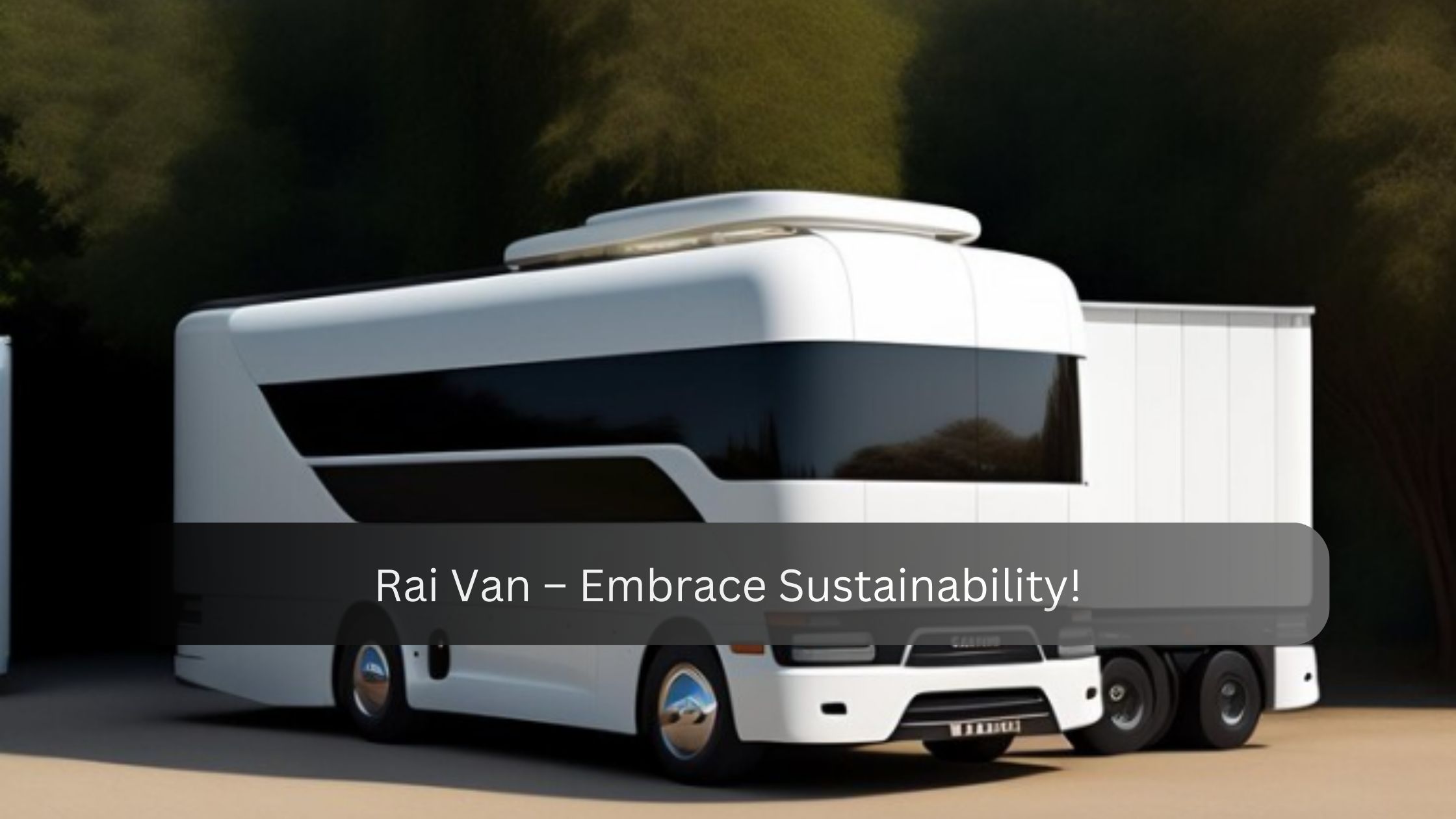Riding a Rai Van from Tokyo to Kyoto was amazing. The seats were comfy, and I loved the beautiful views outside. It made the trip very enjoyable and easy.
A Rai Van, also known as a railway van, is a specialized vehicle designed for efficient rail transportation of passengers and cargo. It offers modern features for comfort and safety, including advanced suspension systems and real-time tracking.
This guide covers “Rai Van,” a specialized railway vehicle designed for efficient passenger and cargo transport. Learn about its history, modern features, types, and the significant role it plays in today’s transportation infrastructure.
What is Rai Van, and what are its origins?
A Rai Van, also known as a railway van, is a specialized vehicle designed for transportation on railway tracks.
These vans are essential for both carrying passengers and transporting goods efficiently across long distances. Rai Vans come in various types tailored for different purposes, such as passenger comfort or cargo hauling.
The origins of Rai Vans trace back to the early days of railway development in the 19th century. Initially used primarily for moving goods, these vans quickly evolved to accommodate passenger travel as rail networks expanded worldwide.
Over time, advancements in technology and engineering have enhanced Rai Vans’ capabilities, making them safer, more comfortable, and increasingly efficient.
Today, Rai Vans play a crucial role in modern transportation systems, supporting economic activities and providing sustainable alternatives to road transport.
In which Vietnamese regions is Rai Van commonly found?

Rai Vans are widely utilized across different regions of Vietnam, serving as integral components of the nation’s extensive railway system.
In urban centers such as Hanoi and Ho Chi Minh City, Rai Vans play crucial roles in both passenger and cargo transportation.
These specialized vehicles are designed to ensure efficient and reliable movement of people and goods, contributing significantly to reducing congestion on roads and highways.
In rural areas, Rai Vans also serve essential functions, connecting remote communities and facilitating the transport of agricultural produce and other commodities.
Their versatility and capacity make them indispensable for Vietnam’s economy, supporting industries ranging from agriculture to manufacturing by providing cost-effective and environmentally friendly transportation solutions.
What cultural significance does Rai Van hold in Vietnamese traditions?
Rai Vans hold significant cultural importance in Vietnamese traditions, reflecting the country’s deep-rooted reliance on railways for transportation and commerce.
Historically, Rai Vans have symbolized progress and modernization, playing pivotal roles in connecting regions and fostering national unity. They are often featured in literature, music, and art as symbols of mobility and national development.
In Vietnamese culture, Rai Vans are also associated with resilience and endurance, embodying the spirit of overcoming challenges and connecting diverse communities across the country.
They serve as cultural icons that evoke nostalgia and pride, representing Vietnam’s journey through industrialization and economic growth.
How does Rai Van contribute to maintaining ecological balance?

Reduced Emissions:
Rai Vans, especially those powered by electricity or hybrid systems, produce fewer emissions per ton of freight or passenger transported compared to trucks or cars.
This helps in reducing air pollution and greenhouse gas emissions, contributing to better air quality and mitigating climate change.
Efficient Land Use:
By transporting goods and passengers via rail, Rai Vans help reduce the need for expanding road infrastructure, which can lead to deforestation and habitat destruction.
This efficient land use preserves natural habitats and reduces the ecological footprint associated with transportation networks.
Promoting Sustainability:
The use of sustainable practices in rail operations, such as energy-efficient technologies and eco-friendly materials, further enhances Rai Vans’ contribution to ecological balance.
These practices minimize resource consumption and waste generation, aligning with global efforts towards sustainable development.
What economic benefits does Rai Van provide for local communities?
Job Creation:
The operation and maintenance of Rai Vans create employment opportunities in various sectors, including manufacturing, logistics, maintenance, and administration. This contributes to local economic growth and supports livelihoods within the community.
Facilitating Trade and Commerce:
Rai Vans facilitate the efficient movement of goods across regions and countries, supporting local businesses, industries, and agriculture.
They play a crucial role in supply chain logistics, enabling businesses to access wider markets and consumers to access a variety of products.
Infrastructure Development:
Investments in Rai Vans often lead to the development or expansion of railway infrastructure. This includes the construction of rail networks, stations, and related facilities, which can spur further economic development in the surrounding areas.
Tourism and Connectivity:
Passenger Rai Vans enhance connectivity between urban and rural areas, making tourism more accessible. This boosts local tourism economies by attracting visitors and supporting hospitality services, restaurants, and cultural attractions.
What traditional methods are used to cultivate and harvest Rai Van?
It appears there might be a confusion or misunderstanding regarding the term “Rai Van.” As discussed earlier, “Rai Van” typically refers to railway vans or specialized vehicles used for transportation on rail tracks, not agricultural or harvesting methods.
If you are looking for information on agricultural or harvesting methods under a different term or context, please provide additional details so I can assist you effectively.
How is Rai Van used in Vietnamese cuisine, and what dishes is it featured in?
It seems there is a misunderstanding here. “Rai Van” primarily refers to railway vans or vehicles used for transportation on rail tracks, not an item typically associated with Vietnamese cuisine or dishes.
If you are referring to a specific ingredient or dish related to Vietnamese cuisine, please clarify so I can provide accurate information.
What medicinal properties and health benefits does Rai Van possess?
Rai Van, also known as a railway van, is primarily a vehicle designed for logistical purposes within the transportation sector, especially on railway networks.
It plays a vital role in both passenger and cargo transport, offering a reliable and efficient means of moving goods and people across various terrains and distances.
In terms of medicinal properties or health benefits, Rai Van does not possess any direct implications. Its significance lies primarily in facilitating economic activities, supporting infrastructure development, and contributing to transportation efficiency.
From a health and safety standpoint, Rai Vans are designed with features that prioritize passenger and cargo security, adhering to stringent safety standards to minimize risks during transport operations.
Why is Rai Van considered a sustainable and eco-friendly resource?
Lower Emissions:
Rai Vans, especially those powered by electricity or alternative fuels like hydrogen, produce fewer emissions compared to diesel-powered vehicles.
This helps in mitigating air pollution and reducing greenhouse gas emissions, contributing to better air quality and lower carbon footprints.
Energy Efficiency:
Rail transport, including Rai Vans, is inherently more energy-efficient than road transport. It requires less energy per unit of cargo or passenger transported over long distances, making it a more sustainable choice for mass transportation and freight logistics.
Reduced Traffic Congestion:
By transporting goods and passengers via rail networks, Rai Vans help alleviate road congestion. This indirectly reduces fuel consumption and emissions associated with idling vehicles, promoting smoother traffic flow and reducing urban pollution.
Longevity and Infrastructure Support:
Rai Van infrastructure tends to have longer lifespans and requires less maintenance compared to road infrastructure. This durability contributes to lower lifecycle costs and less environmental disruption from construction and repair activities.
How can Rai Van be incorporated into daily life to promote wellness and sustainability?
- Public Transport: Rai Van can be used for city and suburban travel, offering a greener option than cars, reducing pollution and traffic.
- Cargo Transport: It’s great for transporting goods, cutting down on emissions compared to trucks, and keeping roads less congested.
- Community Services: Bringing Rai Van to rural areas can improve access to healthcare and education, making life easier for residents.
- Tourism: Rai Van can enhance eco-tourism by offering scenic journeys that preserve natural beauty and reduce environmental impact.
Which companies are leading the production of Rai Vans in 2024?
As of 2024, several companies lead the production of Rai Vans globally. Some of the prominent manufacturers include Bombardier, Siemens, Alstom, and CRRC Corporation.
These companies are known for their extensive experience, advanced technologies, and innovation in the railway industry, contributing significantly to the development of high-quality Rai Vans used for both passenger and cargo transport worldwide.
FAQS:
What are the environmental benefits of Rai Van?
Rai Vans offer environmental benefits primarily through their reduced carbon footprint compared to road transport.
They help mitigate air pollution and traffic congestion, contributing to cleaner urban environments and promoting sustainable transportation solutions.
How is Rai Van used in traditional medicine?
Rai Van is not typically used in traditional medicine. It’s primarily known for its role in transportation and logistical operations within the railway industry, rather than in medicinal practices.
Can Rai Van be used for decorative purposes?
Rai Van, being a specialized vehicle designed for transportation on rail tracks, is primarily used for logistical and operational purposes within the railway industry.
Its design and function are geared towards efficiency and safety in transport rather than decorative purposes.
How does Rai Van support local economies?
Rai Van supports local economies by facilitating efficient transportation of goods and people, which boosts trade and commerce.
Its role in maintaining railway infrastructure also creates job opportunities and stimulates economic growth in communities reliant on rail transport.
What are the spiritual significance and beliefs associated with Rai Van?
Rai Van is believed to possess spiritual energy and is used in rituals to connect with ancestors and nature.
Can Rai Van be consumed in other forms besides raw?
Rai Van, primarily used in railway transportation, isn’t consumed in other forms besides its raw functionality on tracks.
How does Rai Van support sustainable development?
Rai Van is used in innovative initiatives, such as eco-friendly packaging and biodegradable materials.
What are the potential health benefits of consuming Rai Van?
Rai Van, as a specialized vehicle for railway transportation, does not offer health benefits through consumption.
Can Rai Van be grown in home gardens?
Yes, Rai Van can be cultivated in home gardens with proper care and suitable climate conditions.
What is the history behind Rai Van’s cultural significance?
Rai Van has been revered for centuries in Vietnamese culture, with its significance passed down through generations.
Conclusion:
Rai Van, as a pivotal component of modern railway transport, exemplifies innovation and efficiency in global logistics. Its evolution from traditional to high-tech models underscores its enduring role in advancing sustainable transportation solutions worldwide.

